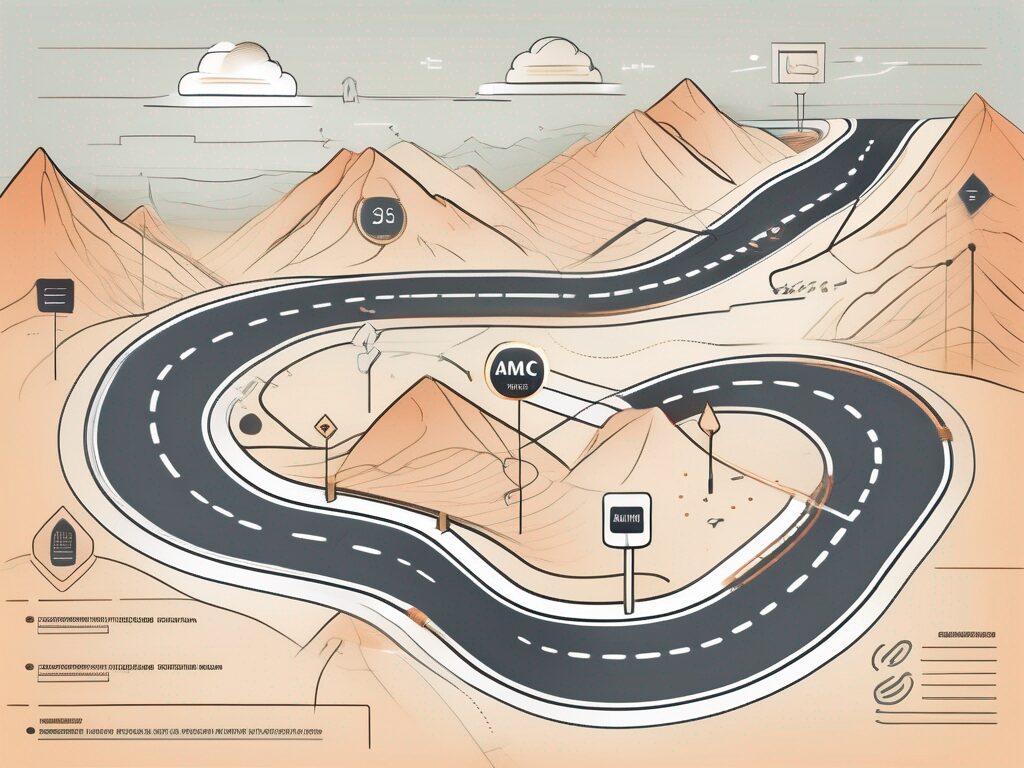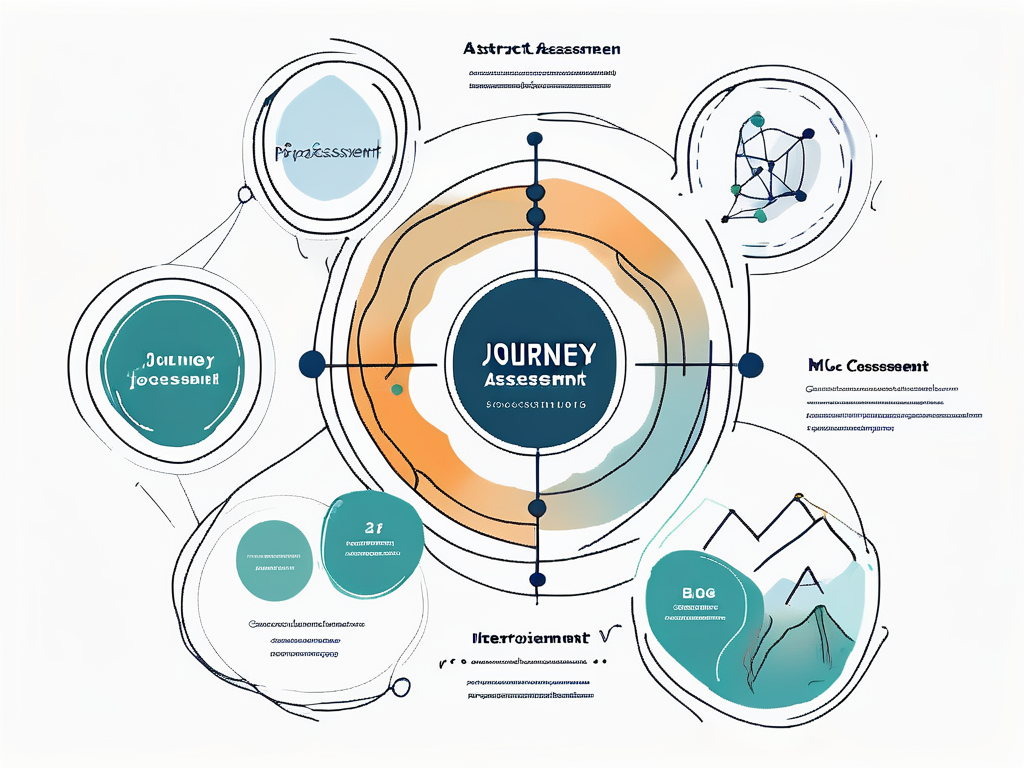Amazon Advertising
The Ultimate Guide to Journey Assessment AMC

In today’s business landscape, understanding customer journeys is paramount to the success of any company. One effective tool for gaining valuable insights into these journeys is the Journey Assessment AMC. This comprehensive guide aims to provide you with a clear understanding of what Journey Assessment AMC entails, its components, steps to conduct an assessment, common challenges, and ways to optimize the process for maximum effectiveness.

Learn How to Make Listings That Convert in 2025!
Read our step-by-step guide on how to optimize your listings using Rufus AI insights. Sign up for our newsletter and get your copy for free!
Show me howUnderstanding Journey Assessment AMC
The Basics of Journey Assessment AMC
At its core, Journey Assessment AMC is a systematic evaluation of the customer journey from start to finish. It involves gathering data and analyzing various touchpoints that customers encounter while interacting with your brand. By understanding these touchpoints, businesses can identify areas of improvement, enhance customer experiences, and ultimately drive higher customer satisfaction and loyalty.
One key aspect of Journey Assessment AMC is the utilization of various tools and techniques to map out the customer journey. This may include customer surveys, data analytics, customer feedback, and journey mapping software. By employing these methodologies, businesses can gain a comprehensive view of the customer experience and pinpoint areas that require attention or enhancement.
The Importance of Journey Assessment AMC
Embarking on a Journey Assessment AMC is crucial for businesses that seek to remain competitive in today’s fast-paced digital landscape. By gaining insights into the customer journey, organizations can better align their processes, offerings, and strategies to meet customer expectations. This deep understanding allows businesses to optimize touchpoints, reduce customer pain points, and ultimately increase customer loyalty and advocacy.
Furthermore, Journey Assessment AMC enables businesses to stay ahead of market trends and consumer preferences. By continuously evaluating and refining the customer journey, organizations can adapt to changing customer needs and preferences, ensuring that their brand remains relevant and competitive in the market. This proactive approach not only fosters customer loyalty but also positions the business as a leader in customer experience innovation.
Components of Journey Assessment AMC
Key Elements in Journey Assessment AMC
When conducting a Journey Assessment AMC, consider the following key elements:
- Customer Touchpoints: Identify the various channels and touchpoints that customers interact with during their journey.
- Data Collection: Gather relevant and reliable data to analyze the effectiveness of each touchpoint.
- Analysis: Based on the collected data, thoroughly examine and evaluate the customer journey to identify areas of improvement.
- Recommendations: Develop actionable recommendations to enhance customer experiences and address pain points.
Understanding customer touchpoints is crucial in mapping out the entire journey. It involves recognizing every point of contact a customer has with the business, whether it’s through a website, social media, in-store interactions, or customer service calls. By comprehensively identifying these touchpoints, organizations can gain a holistic view of the customer experience and pinpoint areas for enhancement.
How to Interpret Journey Assessment AMC Results
Interpreting the results of a Journey Assessment AMC is critical for leveraging the insights gained. Look for patterns, trends, and correlations in the data to identify areas that require immediate attention and improvement. Analyzing the results can help prioritize initiatives, allocate resources effectively, and guide decision-making processes.
Furthermore, delving deeper into the data can reveal nuanced insights that go beyond surface-level observations. By segmenting customers based on behavior or demographics, businesses can tailor their strategies to cater to specific needs and preferences. This personalized approach not only enhances customer satisfaction but also fosters long-term loyalty and advocacy.
Steps to Conduct a Journey Assessment AMC
Preparing for a Journey Assessment AMC
Before conducting a Journey Assessment AMC, it is crucial to lay a solid foundation. By following the steps below, you can ensure that your assessment is well-planned and aligned with your organizational goals:
- Set Clear Objectives: Clearly define the goals and objectives of the assessment. This will help align efforts across the organization and ensure that everyone is working towards a common goal.
- Assemble a Team: Create a cross-functional team comprising individuals from various departments. By bringing together diverse perspectives, you can gain a comprehensive understanding of the customer journey and identify areas for improvement.
- Identify Data Sources: Determine the sources of data that will be collected during the assessment. This may include customer feedback, surveys, and system-generated data. By identifying these sources in advance, you can streamline the data collection process and ensure that you have all the necessary information at your disposal.
Conducting the Assessment
Once you have laid the groundwork, it’s time to dive into the assessment itself. Follow these steps to conduct a thorough and insightful journey assessment:
- Analyze Customer Touchpoints: Begin by mapping out the touchpoints and the journey that customers undertake with your brand. This will provide a visual representation of the customer experience and help you identify potential pain points or areas of improvement.
- Collect Data: Gather relevant data from various touchpoints along the customer journey. This may include customer feedback, interactions, and behavioral data. By collecting data from multiple sources, you can gain a holistic view of the customer experience and identify patterns or trends.
- Review Data: Once you have collected the data, it’s time to analyze it. Dive deep into the numbers, identify strengths, weaknesses, and opportunities for improvement. Look for patterns, trends, and correlations that can provide valuable insights into the customer journey.
Post-Assessment Actions
After completing the assessment, it’s important to take action based on the findings. The following steps will help you turn insights into tangible improvements:
- Develop Actionable Recommendations: Based on the assessment findings, create practical and impactful recommendations. These recommendations should address the identified weaknesses and capitalize on the strengths of the customer journey.
- Implement Changes: Execute the recommended changes and monitor their impact on improving the customer journey. This may involve making adjustments to processes, systems, or customer touchpoints. By implementing changes, you can actively work towards enhancing the overall customer experience.
- Continuous Measurement: Establish feedback loops and measurement mechanisms to continuously monitor and refine the customer journey. Regularly collect and analyze data to track the effectiveness of the implemented changes and identify further areas for improvement. By embracing a culture of continuous improvement, you can ensure that the customer journey remains optimized and aligned with evolving customer expectations.
Common Challenges in Journey Assessment AMC
Identifying Potential Issues
In the dynamic landscape of Journey Assessment AMC, organizations often encounter a myriad of challenges that can impact the effectiveness of their assessment processes. These challenges can range from technical hurdles to organizational barriers, all of which require careful navigation for successful journey assessment.
- Lack of Data Quality: One of the primary hurdles faced by organizations is the presence of inaccurate or incomplete data. This can significantly impede the accuracy and reliability of the assessment, leading to skewed results and misguided strategies.
- Poor Data Integration: Another common challenge is the difficulty in integrating data from diverse sources. This lack of cohesion in data integration can create roadblocks in the analysis and interpretation process, hindering the organization’s ability to derive meaningful insights.
- Organizational Silos: The existence of organizational silos, where departments operate in isolation, poses a significant threat to the coherence of customer journeys. This siloed approach can result in fragmented customer experiences and disjointed interactions, ultimately impacting customer satisfaction and loyalty.
Addressing these challenges requires a strategic and holistic approach that encompasses both technical solutions and organizational alignment.
Overcoming Obstacles in Journey Assessment AMC
As organizations strive to enhance their journey assessment capabilities, it is essential to implement effective strategies to overcome the obstacles that stand in the way of success. By adopting proactive measures and leveraging innovative solutions, organizations can navigate the complexities of journey assessment with confidence and precision.
- Invest in Data Quality: Prioritizing data quality is paramount in ensuring the accuracy and reliability of assessment outcomes. By implementing robust data validation processes and seamless system integrations, organizations can fortify their data foundation and enhance the integrity of their assessments.
- Promote Cross-Functional Collaboration: Fostering collaboration across departments is crucial for creating a unified and seamless customer journey. By encouraging cross-functional alignment and shared goals, organizations can break down silos and deliver cohesive experiences that resonate with customers.
- Utilize Advanced Analytics: Embracing advanced analytics tools and techniques can empower organizations to extract deeper insights from complex data sets. By harnessing the power of data analytics, organizations can uncover hidden patterns, trends, and correlations that drive informed decision-making and strategic planning.
Optimizing Your Journey Assessment AMC
Best Practices for Journey Assessment AMC
To optimize your Journey Assessment AMC process, consider the following best practices:
- Adopt a Customer-Centric Mindset: Keep the customer at the center of your assessment and decision-making processes.
- Monitor Industry Trends: Stay up-to-date with industry trends to adapt your customer journey strategies accordingly.
- Seek Continuous Feedback: Regularly collect feedback from customers to identify pain points and improvement opportunities.
Continuous Improvement in Journey Assessment AMC
Journey Assessment AMC should be seen as an ongoing process rather than a one-time activity. Continuously monitor, measure, and refine the customer journey to adapt to changing customer needs, preferences, and market dynamics. Implementing a culture of continuous improvement ensures that your customer journey remains aligned with evolving customer expectations.
By embracing the principles and practices outlined in this guide, you can embark on a rewarding journey of enhancing customer experiences, driving customer loyalty, and ultimately achieving sustainable business growth. Remember that understanding the customer journey is not a one-size-fits-all, and staying attuned to your customers’ needs and expectations is key to success in the ever-evolving business landscape.
LET’S DISCOVER WHAT’S POSSIBLE FOR YOUR BRAND
We’re here to listen and uncover opportunities tailored to your unique goals.
Fill out the form to get started, and you’ll walk away with real insights and actionable recommendations—whether we work together or not.
- HANDS-ON LEADERSHIP
- AWARD-WINNING PARTNERSHIPS
- CUSTOM-BUILT SOLUTIONS







